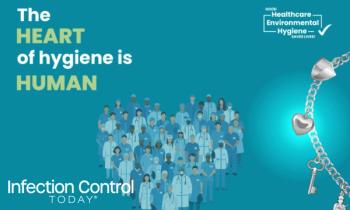
How Hospital Sequencing Unmasked Community MRSA Networks
Hospital-wide sequencing of 8,567 Staphylococcus aureus isolates at NYU Langone revealed that many MRSA cases stem from tight community transmission networks—not in-hospital spread. Presented at IDWeek 2025, the work pinpoints distinct clusters (young MSM/substance-use networks, long-term care residents, and children) and urges IPC strategies that bridge hospital and community.
A high-resolution genomic surveillance effort at NYU Langone shows that what appears to be “sporadic” Staphylococcus aureus in the hospital often traces back to tightly knit transmission networks in the community and signals what classic epidemiology can miss.
This was described in a poster presented at IDWeek in Atlanta, Georgia, from October 19 to 22, 2025, titled “Community-Based Transmission Networks of Staphylococcus Aureus Identified Through Hospital-Based Active Surveillance and Whole-Genome Sequencing.”
The team performed whole-genome sequencing (WGS) on 8,567 S aureus isolates collected from clinical and surveillance cultures between October 2022 and December 2023. Isolates that were ≤20 single-nucleotide polymorphisms (SNPs) apart but lacked any in-hospital epidemiologic links were flagged. Investigators then used targeted chart review and demographic data from the electronic health record to infer community-based transmission clusters.
Five large clusters emerged, and all were methicillin-resistant Staphylococcus aureus (MRSA). The largest, Cluster 1 (n=23; clonal complex [CC] 8/USA300), reflected a young, socially connected population: 83% male; mean age 41; substance use 71%; HIV 52%; and 35% self-identified as men who have sex with men (MSM). Clinical cultures were uniformly skin and soft-tissue infections (SSTI), consistent with USA300 epidemiology.
Cluster 5 (n=8; CC30) mirrored Cluster 1 demographically, with even higher substance use (87%) and half of the patients documented as “found down” before admission—again with SSTI predominating. Together, these 2 clusters spotlight how high-risk social networks, substance use, and unstable housing can sustain MRSA circulation that later presents to hospitals.
In contrast, Clusters 2 and 3 (combined n=27; both CC5) mapped geographically to Brooklyn and skewed older (mean age 67 to 75). Seventy-five percent had recent exposure to nursing homes or group homes, and these patients were more likely to present with bacteremia and not SSTI. The signal suggests facility-linked spread within long-term care ecosystems that seed acute-care admissions.
Cluster 4 (n=9; CC8) comprised young children (mean age 2.5 years). Two-thirds had MRSA colonization detected in the neonatal intensive care unit, one-third developed SSTI, and many were from Orthodox Jewish communities in Brooklyn, indicating household and community childcare networks as potential conduits.
Why it matters for IPC: The poster demonstrates how hospital-based WGS can illuminate upstream community transmission that traditional contact tracing—focused inside hospital walls—misses. For infection preventionists, the practical takeaways include:
Risk-profiled interventions. Tailor prevention to the network: SSTI-heavy USA300 clusters may benefit from emergency department decolonization bundles, wound care access, harm-reduction linkage, and screening in substance-use treatment settings; CC5 clusters tied to postacute care call for tight bidirectional IPC coordination with nursing and group homes (transfer hygiene, chlorhexidine bathing, device care, and cohorting).
Bridge surveillance. Routine WGS of clinical and admission-screen isolates, coupled with geodemographic review, can differentiate between community- and facility-acquired amplification and prioritize outreach.
Equity lens. Findings cut across MSM networks, people who use drugs, older adults in congregate care, neonatal/early childhood settings, and specific cultural communities—underscoring the need for culturally attuned education and access to decolonization and primary care.
Bottom line: By pairing hospital-wide WGS with careful epidemiology, Talukder and colleagues show that many hospital MRSA cases are the tip of community-based transmission networks. Embedding these insights into IPC strategy, both inside and beyond the hospital, could prevent both community- and hospital-acquired S. aureus disease.
Authors: Nawar Talukder, MD, MPH (Fellow, NYU Langone); Courtney Takats, MPH (NYU Langone Health); Gregory Putzel, PhD (NYU Langone); Alice Tillman, BA (NYU Langone); Magdalena M. Podkowik, DVM, PhD (New York University); Natalia M. Arguelles, BA (Medical Student, Washington University School of Medicine); Anusha Srivastava, BA (Case Western Reserve University School of Medicine); Julia Shenderovich (NYU Langone Health, Queens); Alejandro Pironti, PhD (NYU Grossman School of Medicine); Bo Shopsin, MD, PhD (NYU Langone Health); Sarah E. Hochman, MD (Hospital Epidemiologist & ID Section Chief, NYU Langone Health).
Newsletter
Stay prepared and protected with Infection Control Today's newsletter, delivering essential updates, best practices, and expert insights for infection preventionists.



